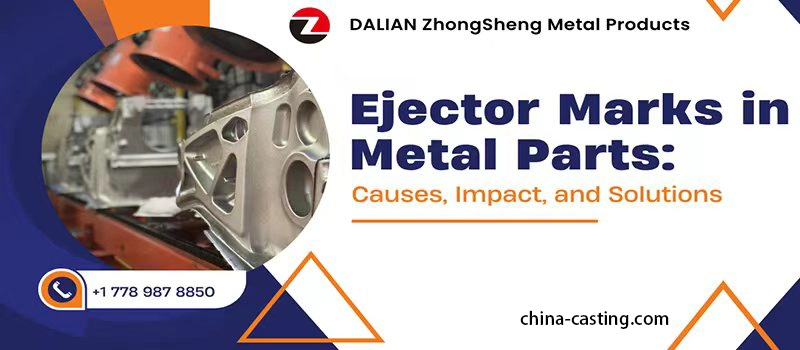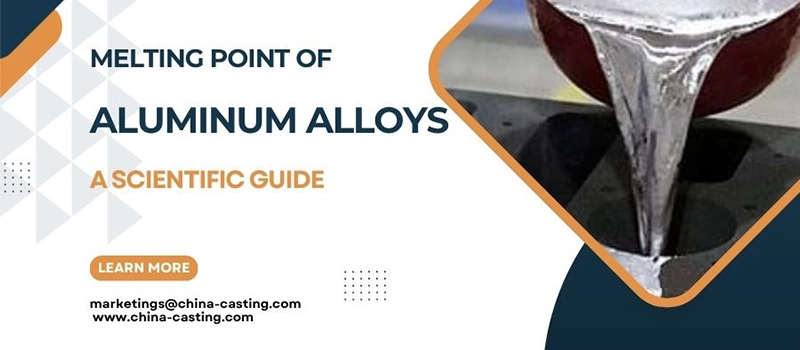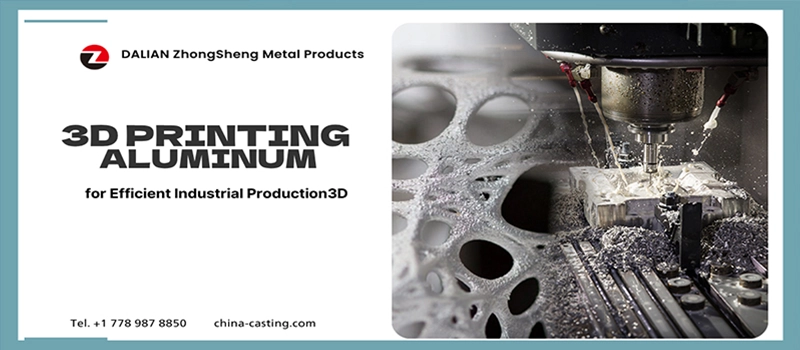Are you constantly dealing with poor adhesion when nickel plating aluminum? Do coatings flake off during use or fail inspection after plating? Have you ever wondered why aluminum needs special handling while other metals like steel or copper don’t? Do you feel unsure about whether you need electroless nickel plating or electrolytic nickel plating for your parts? Is inconsistent plating thickness affecting your product quality? These questions are common—but the problems they point to are expensive.
Aluminum may be lightweight and widely used, but it is also chemically reactive. The moment it’s exposed to air, it forms a dense oxide layer that resists bonding with other materials. This makes traditional plating methods ineffective without specialized preparation. Skip the right steps, and the result is uneven surface coverage, poor corrosion resistance, and costly rework. In industries like automotive, petrochemical, and electronics, these failures aren’t just technical—they delay production and damage your bottom line.
That’s why nickel plating aluminum isn’t just another surface treatment—it’s a precision-driven process that transforms raw aluminum into a durable, corrosion-resistant component. When done correctly, it improves performance, extends service life, and protects your equipment investment. In this article, I’ll show you exactly why aluminum needs plating, how to do it right, and what makes nickel the best solution for long-term industrial use.
Why Aluminum Needs Electroplating: Understanding Material Limitations
Aluminum is known for being lightweight, corrosion-resistant, and cost-effective—but when it comes to surface treatments like nickel plating aluminum, it becomes a much more demanding material. Despite its popularity, aluminum’s unique surface properties make it one of the most challenging metals to plate reliably without special pre-treatment.
Aluminum’s Natural Oxide Layer is a Barrier to Plating
The core reason aluminum requires electroplating lies in its reactivity. As soon as bare aluminum is exposed to air, it forms a microscopic but extremely stable aluminum oxide layer. This layer reforms instantly—even after cleaning—and acts as a barrier that blocks proper bonding with plating materials like nickel or zinc.
That’s why nickel plating on aluminum cannot be performed directly. If you skip surface activation or zincating, the nickel layer won’t adhere properly. You’ll end up with delamination, flaking, or corrosion under the plating—issues that compromise structural integrity and product appearance. This oxide layer is exactly why even electroless nickel plating aluminum must begin with surface preparation.
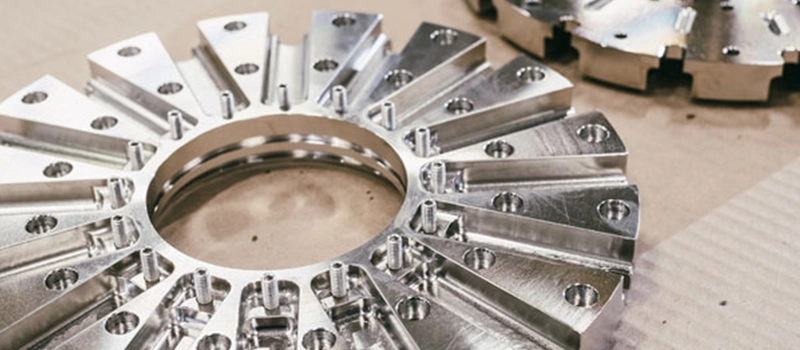
Alloying Elements Complicate the Process Further
Not all aluminum is created equal. Aluminum alloys—commonly used in automotive and aerospace parts—contain varying amounts of silicon, copper, magnesium, or zinc. These added elements improve mechanical performance but negatively affect plating adhesion.
For example, high-silicon castings can resist even the best plating solutions. This is why electroless nickel plating on aluminum alloy may require special treatments like double zincating or pre-strike layers. Without these adaptations, plating defects like pitting, blistering, or black spotting may occur.
This makes aluminum one of the few metals where electroless nickel plating process steps must be customized based on alloy composition.
Why Electroplating is Necessary for Industrial Use
While aluminum resists corrosion naturally in dry environments, it’s highly vulnerable in acidic, alkaline, or marine atmospheres. That’s why in industries like construction, petrochemical, and electronics, electroless nickel plating for aluminum is applied to improve resistance to:
- Moisture
- Chemicals
- Abrasion
- Friction
- Heat
In some cases, zinc-nickel plating on aluminum is used as an alternative when both corrosion and sacrificial protection are needed, such as in automotive underbody components.
Step-by-Step: Electroless Nickel Plating Process on Aluminum
Electroless nickel plating aluminum requires a precise, multi-stage workflow to ensure the nickel layer adheres properly and performs as expected. This isn’t a one-size-fits-all process. Every step must be optimized for aluminum’s reactive surface and oxide layer. Below, I’ll walk you through the critical electroless nickel plating aluminum process steps, from surface prep to final rinse.
Surface Cleaning and Degreasing
Removing all contaminants is the foundation of a successful plating process. Any oil, grease, or residue will prevent chemical reactions from occurring uniformly.
Alkaline Cleaning
Aluminum parts are submerged in an alkaline cleaner to dissolve organic residues and machining fluids. This step ensures that the surface is chemically clean and ready for the next stage.
Water Rinse
After cleaning, the part must be rinsed thoroughly with deionized water. This prevents carryover of chemicals into the acid etching stage.
Acid Etching and Deoxidizing
This stage removes the natural oxide layer on aluminum and roughens the surface slightly for better adhesion.
Acid Pickling
Typically using nitric or sulfuric acid solutions, this step removes oxides and smut from the surface. The goal is to reveal a fresh, active aluminum surface.
Deoxidizer Application
Deoxidizers—often a blend of acids and fluoride salts—further strip residual oxides and activate the surface, ensuring optimal conditions for zincating.
Zincating: Preparing Aluminum for Nickel Plating
Zincating is one of the most critical steps in nickel plating aluminum. It replaces the oxide layer with a thin zinc film, which nickel can adhere to effectively.
Single or Double Zincating
For high-silicon or difficult alloys, a double zincating process may be used. The part is dipped in a zincate bath, stripped, and then re-zincated. This builds a more stable base layer.
Activation and Pre-Nickel Dip
Once zincated, parts may undergo activation using a weak acid dip or nickel strike to convert the zinc surface and prepare for the plating bath.
Nickel Strike Layer (Optional)
In some cases, a thin electrolytic nickel strike is applied before the main electroless bath. This provides added anchoring strength between the zinc and final nickel layer.
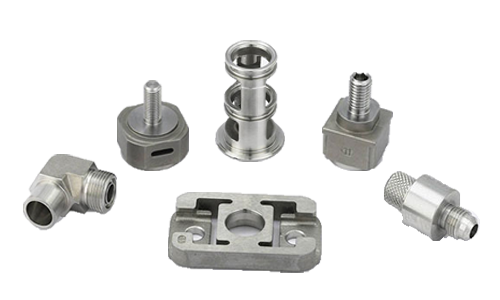
Get a quote now!
Electroless Nickel Plating Bath
This is where the actual electroless nickel plating aluminum process happens. Unlike electrolytic plating, no electrical current is used.
Chemical Deposition
Nickel ions in the bath are reduced chemically (typically with sodium hypophosphite), depositing a uniform layer of nickel-phosphorus alloy over the entire surface—even on complex shapes.
Bath Temperature and pH
Maintaining correct temperature (85–95°C) and pH (4.5–5.0) is essential. These affect plating speed, thickness, and uniformity. Bath chemistry must be monitored and replenished regularly.
Post-Treatment: Rinse, Dry, and Bake
After plating, the part is rinsed and treated based on final use requirements.
Hot Water Rinse and Air Drying
Residual chemicals are washed away to prevent staining or corrosion. Clean, filtered air drying prevents water spots.
Hydrogen Relief Bake (if needed)
To relieve hydrogen embrittlement, some parts are baked at low temperatures (e.g., 200°C for 2 hours), especially when used in structural or fatigue-sensitive applications.
Typical Thickness of Electroless Nickel Plating on Aluminum
The final layer thickness usually ranges from 5 to 25 microns, depending on application needs. Thicker layers provide better wear and corrosion resistance but take longer to deposit.
This full process ensures the final nickel plating aluminum is not only visually clean but also mechanically bonded and chemically resistant—ready to withstand industrial demands.
Key Benefits of Nickel Plating Aluminum
When applied correctly, nickel plating aluminum dramatically improves the performance and lifespan of aluminum parts. The process does more than create a shiny surface—it transforms soft, reactive aluminum into a high-performance material capable of withstanding demanding industrial environments. Below are the most important benefits.
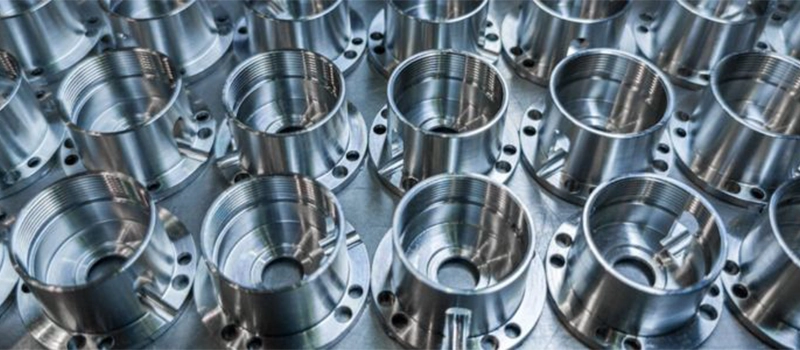
Corrosion Resistance
One of the primary reasons to use nickel plating on aluminum is to increase its resistance to corrosion. Aluminum is naturally corrosion-resistant in dry environments, but in humid, acidic, or salt-laden conditions, it degrades quickly.
Barrier Protection
The nickel layer acts as a protective barrier between the aluminum and external contaminants. In electroless nickel plating aluminum, the phosphorus content in the nickel layer enhances corrosion resistance even further, making it ideal for petrochemical, marine, and mining environments.
Increased Surface Hardness and Wear Resistance
Aluminum is lightweight but relatively soft. When used in high-friction or abrasive applications, it can wear down quickly. Plating nickel on aluminum drastically increases surface hardness.
Mechanical Durability
Electroless nickel deposits typically have a hardness of 500–600 Vickers (HV) as-plated, and can exceed 900 HV after heat treatment—comparable to hard chrome. This makes nickel plating aluminum highly suitable for moving components, tooling fixtures, and industrial machinery parts.
Uniform Coverage on Complex Geometries
Unlike electrolytic processes, electroless nickel plating aluminum provides a completely uniform coating, even on complex, threaded, or recessed parts.
No Electrical Contact Points Needed
Because the deposition is autocatalytic, there are no high or low current density zones. This ensures even coverage on internal bores, sharp corners, and cavities—essential for aerospace, electronic connectors, and medical devices.
Improved Electrical Conductivity and Solderability
Though aluminum conducts electricity well, its oxide layer disrupts contact. Nickel plating aluminum creates a stable, solderable surface ideal for electrical components.
Solder-Ready Finish
The nickel layer accepts tin-lead or lead-free solder easily. This makes electroless nickel plating for aluminum highly effective in PCB housings, RF shielding, and connector applications where strong electrical bonding is required.
Thermal Stability and Heat Resistance
In high-temperature environments, untreated aluminum can oxidize or deform. A nickel layer increases its stability under thermal load.
Application in Engine and Heat Transfer Components
Nickel plating aluminum alloy parts are commonly used in heat exchangers, engine covers, and combustion chamber housings, where both corrosion and heat resistance are required.
Enhanced Aesthetics and Finish Options
Besides performance, nickel plating aluminum also improves the appearance of the product.
Visual Appeal
Whether you want a matte industrial finish or a glossy, reflective surface, nickel coatings deliver a clean, professional look. Variations like black nickel plating on aluminum or black electroless nickel plating aluminum provide both function and visual contrast in consumer-facing or decorative applications.
Long-Term Cost Efficiency
Although the process may seem more expensive upfront, electroless nickel plating aluminum often reduces long-term costs by extending product life, minimizing part replacement, and improving reliability.
Reduced Downtime and Maintenance
Fewer failures, better corrosion resistance, and longer wear intervals mean less maintenance and fewer breakdowns—ideal for OEMs and equipment manufacturers looking to reduce operating costs.
Chemical (Electroless) Nickel Plating vs. Electrolytic Nickel Plating
When it comes to nickel plating aluminum, there are two main technologies used across industries: electroless nickel plating (chemical) and electrolytic nickel plating (electrical). Each has its own advantages, limitations, and application scenarios. Choosing the right method depends on part geometry, required thickness, wear resistance, cost, and your aluminum alloy’s behavior during plating.

Below is a clear, side-by-side comparison of the two plating methods:
| Feature / Attribute | Electroless Nickel Plating (Chemical) | Electrolytic Nickel Plating (Electrical) |
|---|---|---|
| Power Source | No electricity required (autocatalytic reaction) | Requires electrical current and anodes |
| Coating Uniformity | Very uniform thickness on complex shapes and inner holes | Non-uniform; thicker near edges, thinner in recessed areas |
| Adhesion on Aluminum | Excellent after zincating and activation | Fair to good; requires strong pre-treatment for aluminum |
| Process Complexity | More chemical controls, but easier for mass coating | More equipment-intensive; suitable for simpler geometries |
| Surface Hardness (As-Plated) | 500–600 HV; can be increased with heat treatment | 150–300 HV (standard nickel) |
| Corrosion Resistance | High, especially with high-phosphorus content | Moderate; depends on bath chemistry |
| Bath Maintenance | Requires regular monitoring and replenishment | Requires current control and anode maintenance |
| Solderability | Excellent; widely used in electronics and connector housings | Good, but may require additional post-treatment |
| Environmental Control | Chemical waste must be managed properly | May produce more sludge and heavy metal waste |
| Best for | Complex parts, high corrosion resistance, aluminum substrates | Flat parts, decorative applications, cost-sensitive jobs |
| Examples in Use | Electroless nickel plating aluminum alloy parts, connectors, sensors | Coins, hardware, decorative trims, steel housings |
In most industrial applications where aluminum is the base material, electroless nickel plating aluminum is the preferred method. It handles complex geometries better, offers superior corrosion resistance, and provides consistent results across different aluminum alloys. Meanwhile, electrolytic nickel plating remains useful for decorative purposes or when cost is the primary factor.
Nickel Plating vs. Other Coating Methods: A Comparative Look
When deciding how to protect or enhance aluminum components, engineers and buyers often evaluate several surface treatment options. Nickel plating aluminum is just one of them—but it stands out in many industrial scenarios due to its balance of performance, durability, and versatility.
Here’s how it compares to other common coating methods used in metal manufacturing.
Nickel Plating vs. Anodizing
Anodizing is one of the most frequently used finishes for aluminum, especially in architectural and consumer products. However, it differs significantly from nickel plating in both function and finish.
- Anodizing is an electrochemical process that thickens aluminum’s natural oxide layer.
- It offers moderate corrosion resistance, excellent color options, and is environmentally friendly.
- However, anodized surfaces are still prone to wear and chipping, and it doesn’t provide the same level of surface hardness as electroless nickel plating aluminum.
In contrast, nickel plating aluminum adds a metallic layer over the surface, providing greater wear resistance, a smoother surface, and more chemical protection. Nickel can also be deposited on interior surfaces and complex shapes—which anodizing can’t reach.
Nickel Plating vs. Zinc Plating
Zinc plating is commonly used to protect steel parts but is less effective on aluminum without extensive preparation.
- Zinc provides sacrificial corrosion protection, meaning it corrodes instead of the base metal.
- On aluminum, zinc plating is not naturally compatible—it requires intermediate layers or special procedures such as zinc-nickel plating on aluminum.
- Black zinc nickel plating on aluminum is used in automotive components to meet higher corrosion standards.
Nickel, especially electroless nickel plating for aluminum, is more chemically stable, adheres better, and provides a more refined surface finish. It is preferred for precision engineering, electronics, and high-temperature environments.
Nickel Plating vs. Powder Coating
Powder coating is a dry finishing process often used on aluminum extrusions, furniture, and automotive parts.
- It provides a thick, colorful, and uniform appearance, but offers limited corrosion protection unless paired with a conversion coating or primer.
- It lacks conductivity, making it unsuitable for electrical components.
- It also doesn’t offer the same surface hardness or dimensional control as nickel plating aluminum.
Nickel plating, on the other hand, produces a tighter tolerance coating, maintains dimensional accuracy, and is suitable for functional applications beyond aesthetics.
Nickel Plating vs. Painting
Painting aluminum is the most basic coating method and is often chosen for its simplicity and cost.
- Paint provides a visual barrier but offers minimal wear protection.
- It chips, scratches, and fades under mechanical stress or harsh environments.
- Nickel plating on aluminum far outperforms painted finishes in terms of durability, surface hardness, and chemical resistance.
For any industrial use where longevity matters, nickel is a far superior choice.
What Other Metals Can Be Nickel Plated Besides Aluminum
While nickel plating aluminum is common in high-performance industries, aluminum is far from the only metal that benefits from nickel plating. A wide range of base metals can be plated using either electroless or electrolytic methods, depending on the application and desired properties.
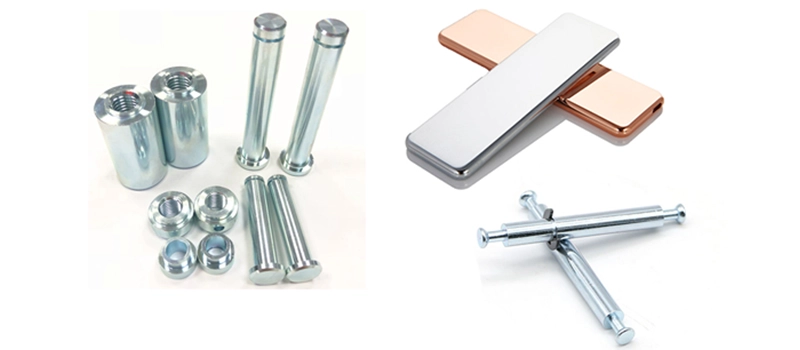
Here’s an overview of the most common materials that support reliable nickel plating.
Steel and Stainless Steel
Steel—especially mild steel and carbon steel—is the most frequently nickel-plated metal in industrial manufacturing.
- It provides a strong, receptive base for both electrolytic and electroless nickel plating.
- Nickel improves corrosion resistance, especially in components exposed to moisture or chemicals.
- On stainless steel, electroless nickel is often used to enhance wear resistance without compromising corrosion protection.
These metals require basic cleaning and activation but don’t present the oxide challenges found in nickel plating aluminum.
Copper and Copper Alloys (Brass, Bronze)
Copper and its alloys are highly compatible with nickel plating due to their excellent electrical conductivity and surface reactivity.
- Nickel plating copper improves tarnish resistance and solderability, making it ideal for electrical contacts and RF shielding.
- Brass and bronze benefit from nickel plating in plumbing, decorative hardware, and precision instruments.
Unlike plating nickel on aluminum, copper substrates usually don’t require zincating or oxide layer removal, which simplifies the process.
Magnesium and Titanium
Both magnesium and titanium are lightweight, high-strength materials used in aerospace and medical sectors—but they’re notoriously difficult to plate.
- Nickel plating on magnesium requires specialized pre-treatments, including fluoride-based etching and zincate or copper strike layers.
- Titanium is extremely corrosion-resistant on its own, but nickel plating adds wear protection in moving assemblies.
These metals demand even more surface preparation than electrolytic nickel plating on aluminum, making them suitable only for critical, high-budget applications.
Zinc Die Cast Alloys
Zinc-based alloys are widely used in die casting for automotive, appliance, and hardware industries.
- Their surface is porous and reactive, which can trap plating chemicals if not sealed properly.
- Nickel plating enhances surface finish, corrosion resistance, and paint adhesion.
Although zinc is a common alloying element in zinc-nickel plating on aluminum, plating directly on zinc requires specialized copper or nickel strike layers to improve adhesion.
Nickel Plating Over Other Nickel Alloys
In some cases, components already made of nickel alloys are further plated with nickel to enhance surface finish, control tolerances, or prepare for subsequent coatings like gold or chrome.
This is common in electronics, aerospace connectors, and high-temperature applications.
Real-World Applications of Nickel Plated Aluminum
Thanks to its lightweight nature, cost-effectiveness, and versatility, aluminum is a go-to material in many industries. But raw aluminum alone isn’t always enough. That’s where nickel plating aluminum comes in—transforming soft, reactive aluminum into a surface that can withstand harsh environments, friction, moisture, and chemical exposure.
Here’s where electroless nickel plating aluminum is making an impact in real-world industrial sectors.
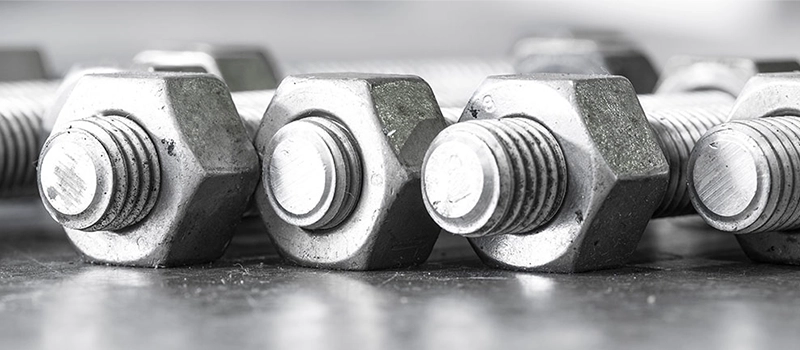
Automotive Industry
In automotive applications, weight reduction is critical—but so is durability.
- Aluminum nickel plating is used on transmission housings, engine brackets, brake components, and fuel system parts.
- Electroless nickel plating on aluminum alloy components provides corrosion and wear resistance under extreme temperature changes and road conditions.
- Specialized finishes like black nickel plating on aluminum are also used for design elements and under-the-hood components where aesthetics and protection both matter.
Aerospace and Defense
In aerospace, every gram counts—but strength, conductivity, and corrosion resistance are non-negotiable.
- Nickel plating aluminum ensures that structural and electronic parts perform reliably at high altitudes and under extreme conditions.
- Electroless nickel plating aluminum is especially useful for satellite parts, housings, and interior systems where weight and thermal stability must be balanced.
- Components must often endure exposure to fuel, hydraulic fluids, and salt fog—conditions that uncoated aluminum cannot survive.
Petrochemical and Energy Sectors
Aluminum is increasingly used in energy infrastructure—but only when properly protected.
- Nickel plating on aluminum is used in valves, pump housings, heat exchangers, and sealing surfaces exposed to chemicals and saltwater.
- These components face aggressive corrosion threats—zinc-nickel plating on aluminum is sometimes used where sacrificial protection is needed.
- Electroless nickel plating for aluminum offers a passive barrier that extends part lifespan and minimizes shutdowns for maintenance.
Construction and Industrial Equipment
Heavy-duty equipment and structural assemblies often rely on aluminum components for portability and ease of machining.
- Plating nickel on aluminum is common in tool housings, hydraulic fittings, and fasteners that need to resist both abrasion and corrosion.
- Nickel-plated finishes protect moving parts like bushings and sliders from friction damage.
Electronics and Telecommunications
In electronics, aluminum enclosures and connectors require conductive, solderable finishes.
- Electroless nickel plating aluminum ensures strong solder joints and EMI shielding in enclosures, connectors, and antenna bases.
- Black electroless nickel plating aluminum is sometimes used for anti-reflective components in optical devices or RF shielding applications.
Need Help? We’re Here for You!
Medical and Laboratory Equipment
Precision aluminum components used in surgical tools, imaging systems, and clean-room devices require both biocompatibility and surface durability.
- Nickel-plated aluminum provides a non-porous, cleanable, and chemically inert surface that meets stringent hygiene and sterilization requirements.
Conclusion
Nickel plating aluminum transforms lightweight but reactive aluminum into a durable, corrosion-resistant, high-performance material. Whether for automotive, aerospace, or electronics, it’s the go-to solution for extending service life and enhancing reliability. With the right process, nickel plating aluminum delivers unmatched value in industrial manufacturing.


